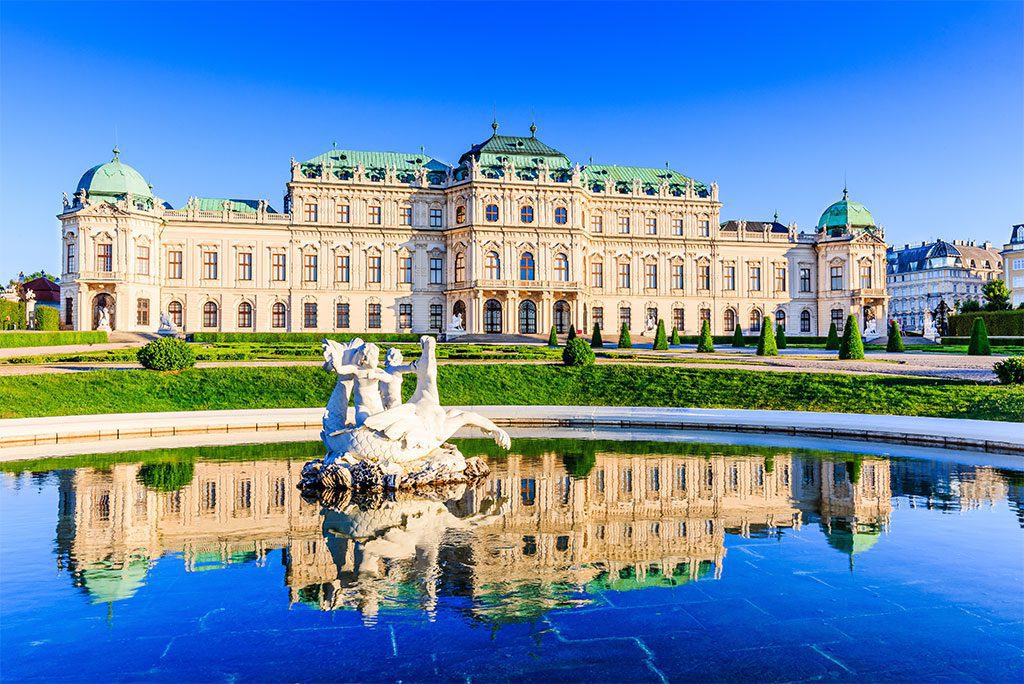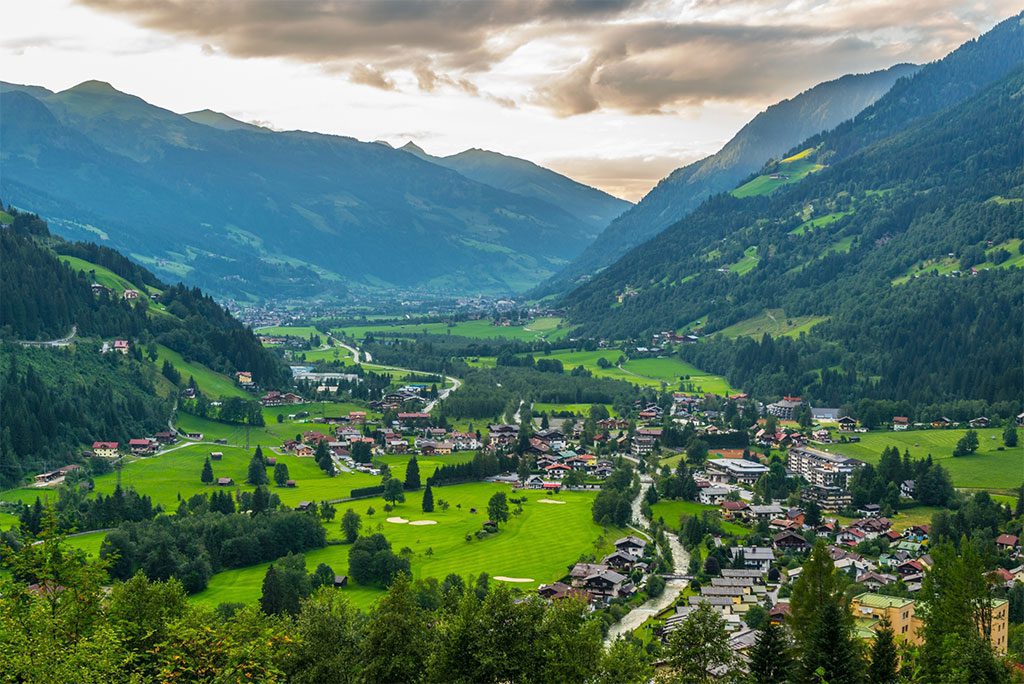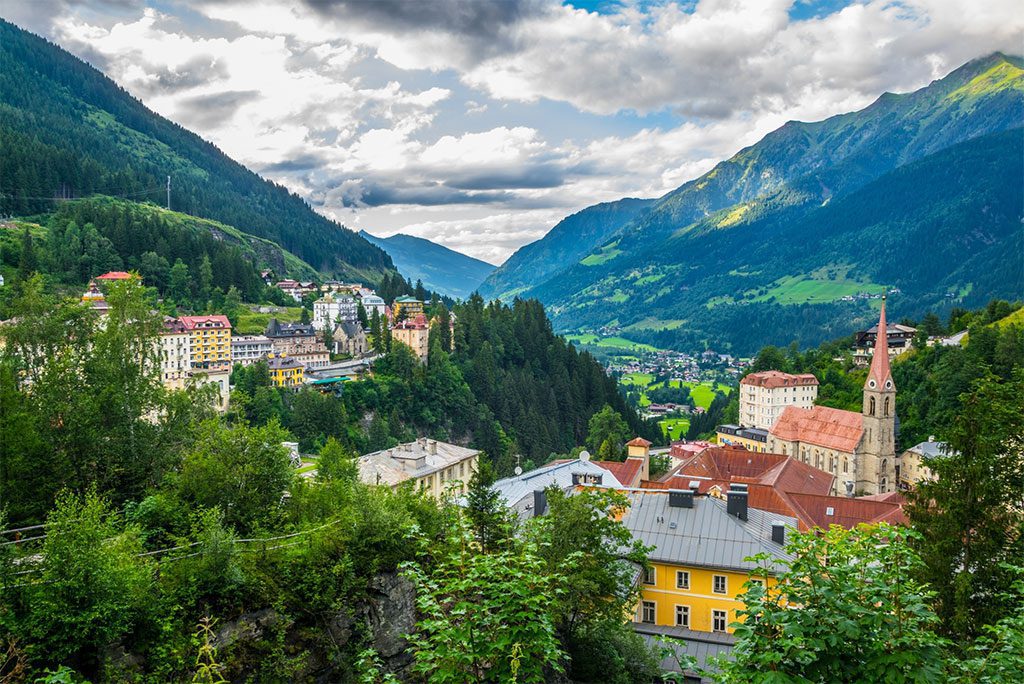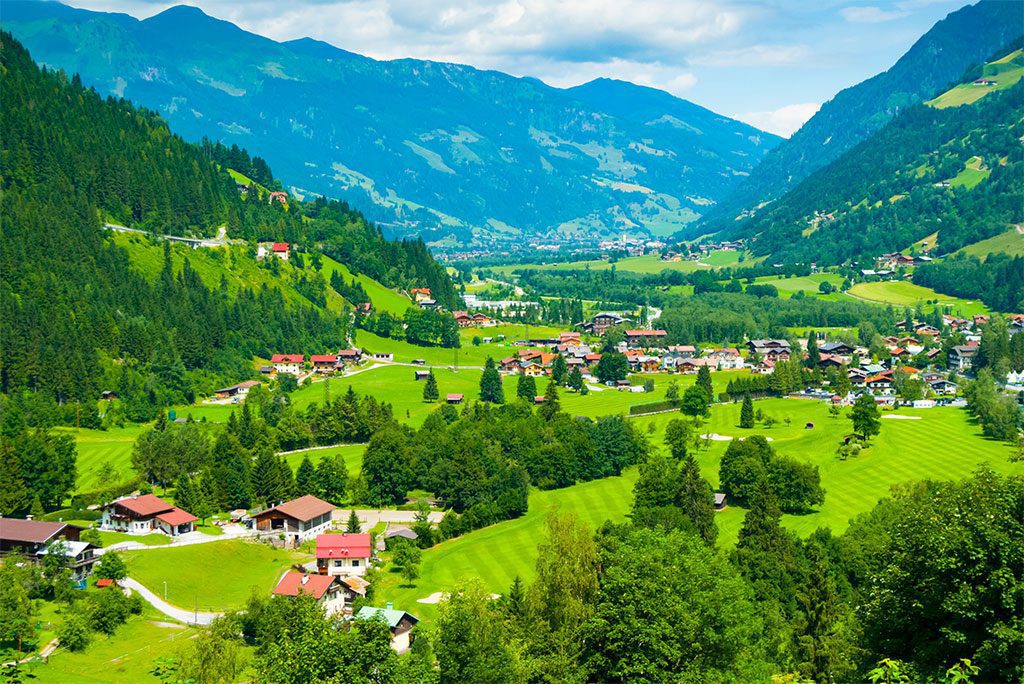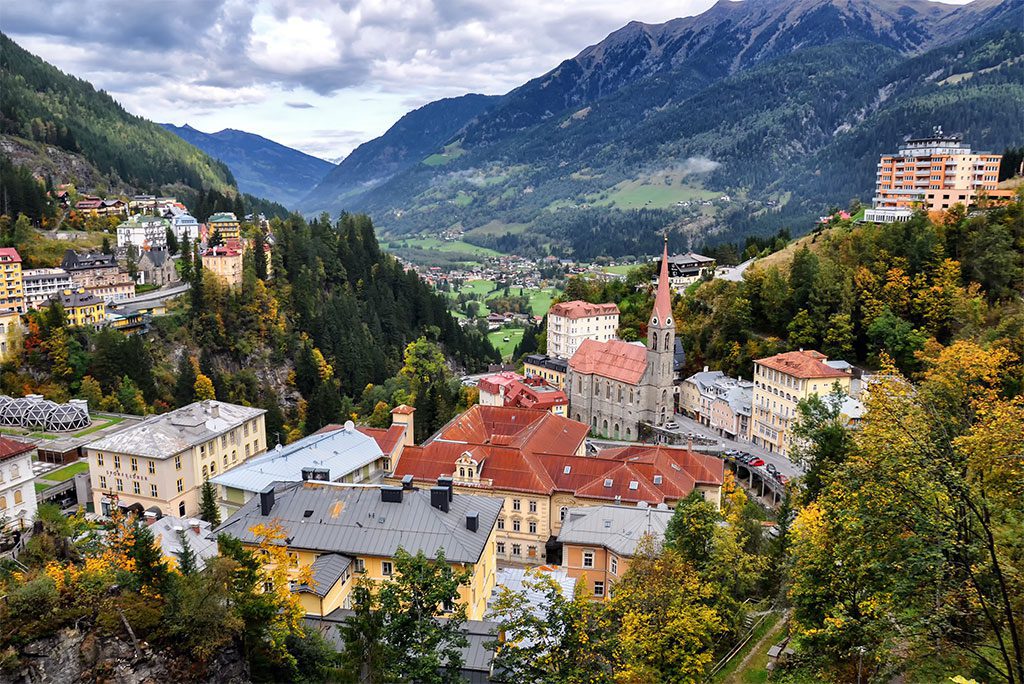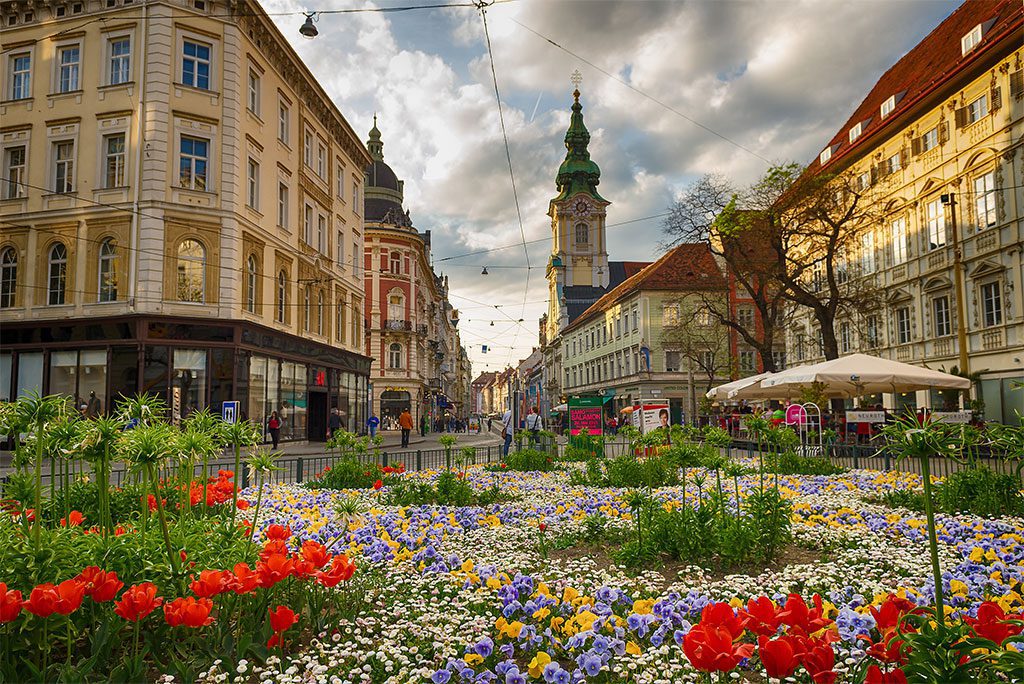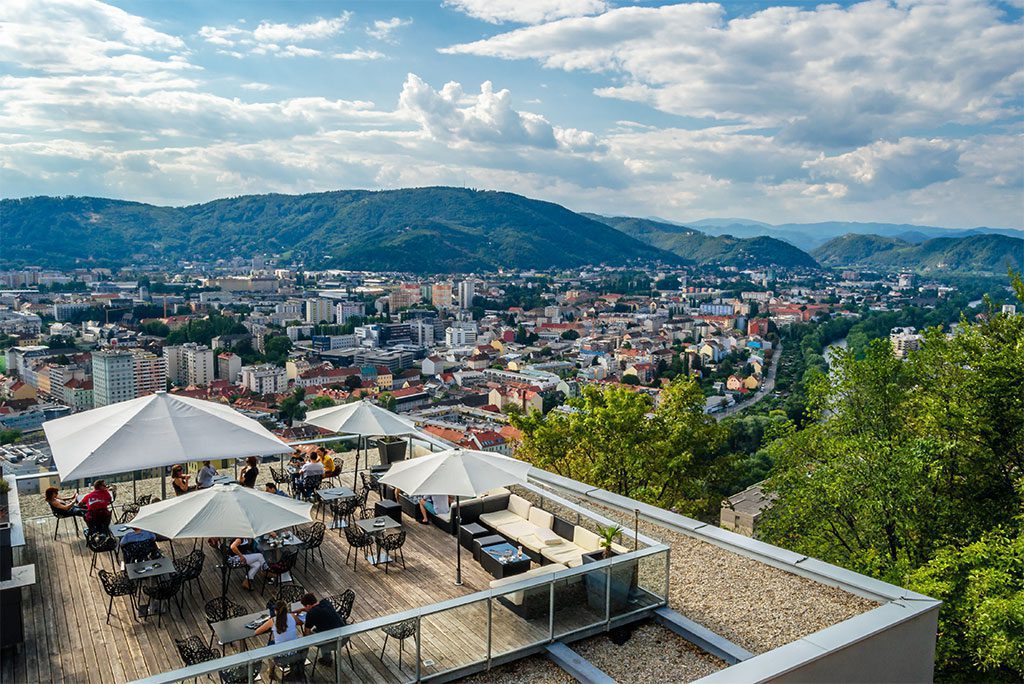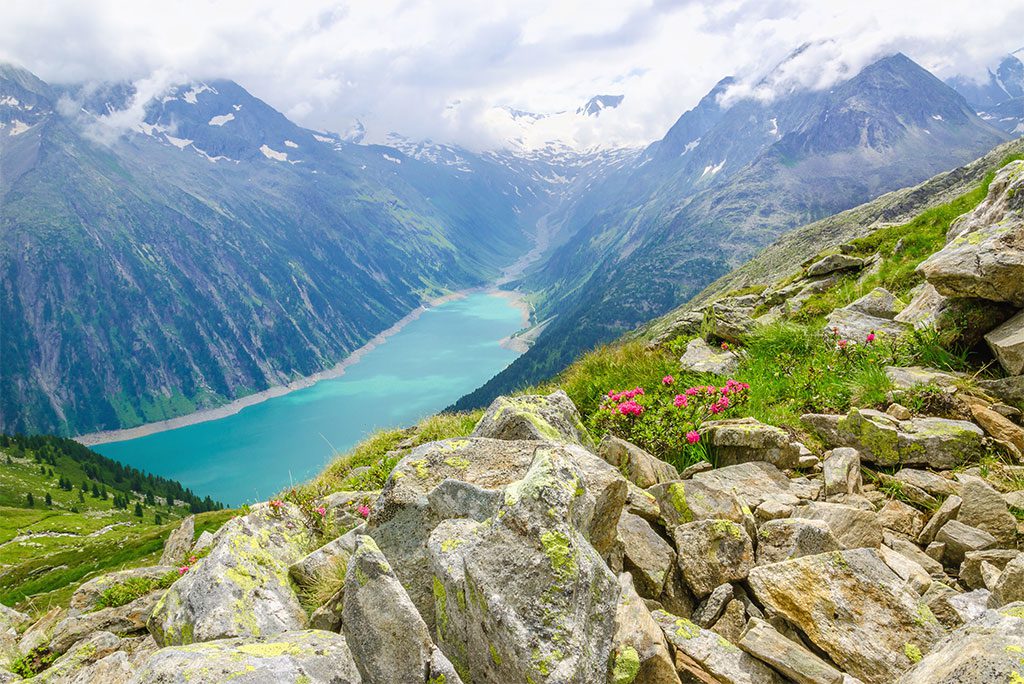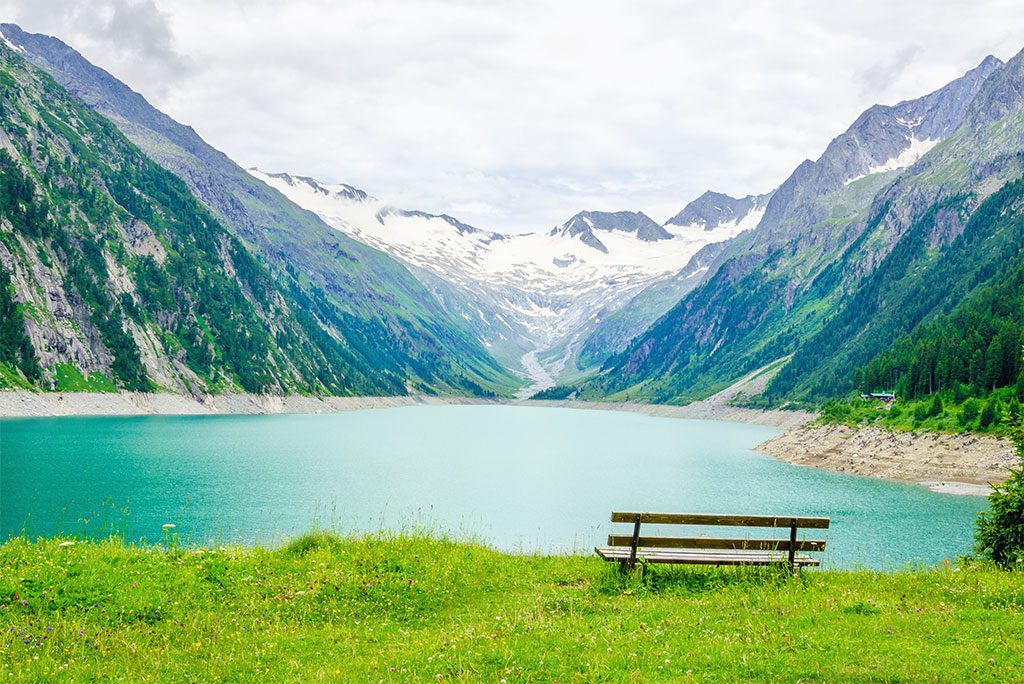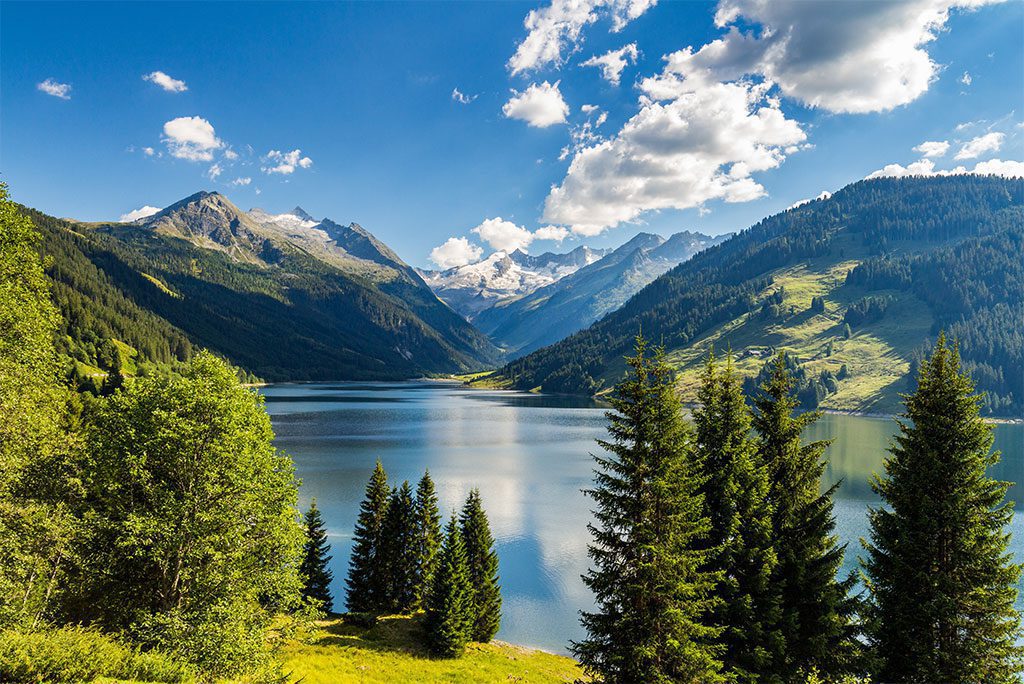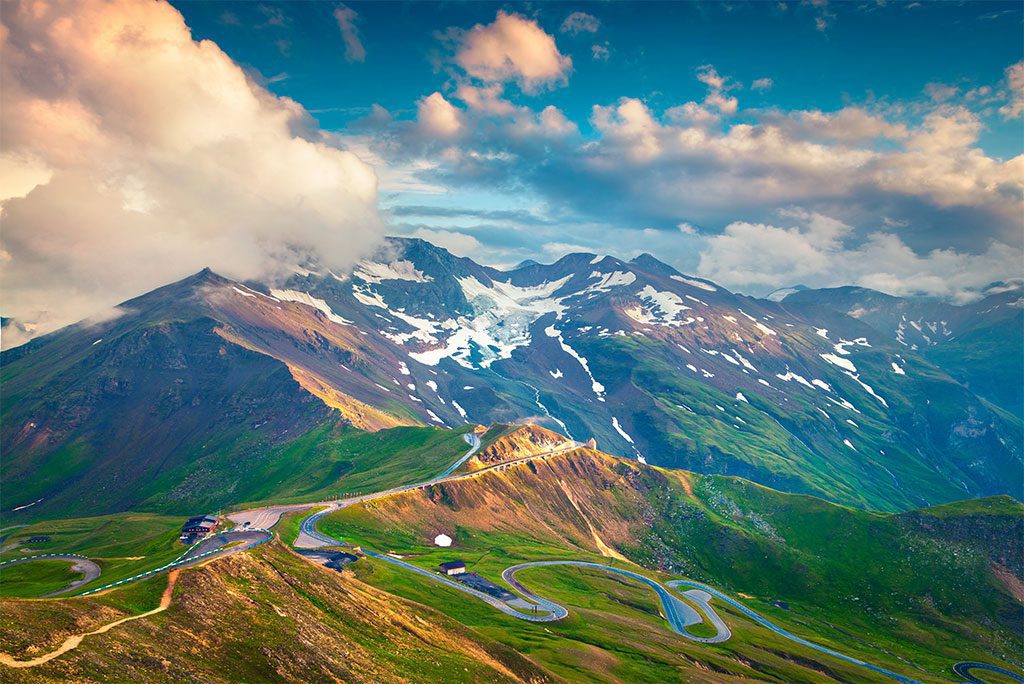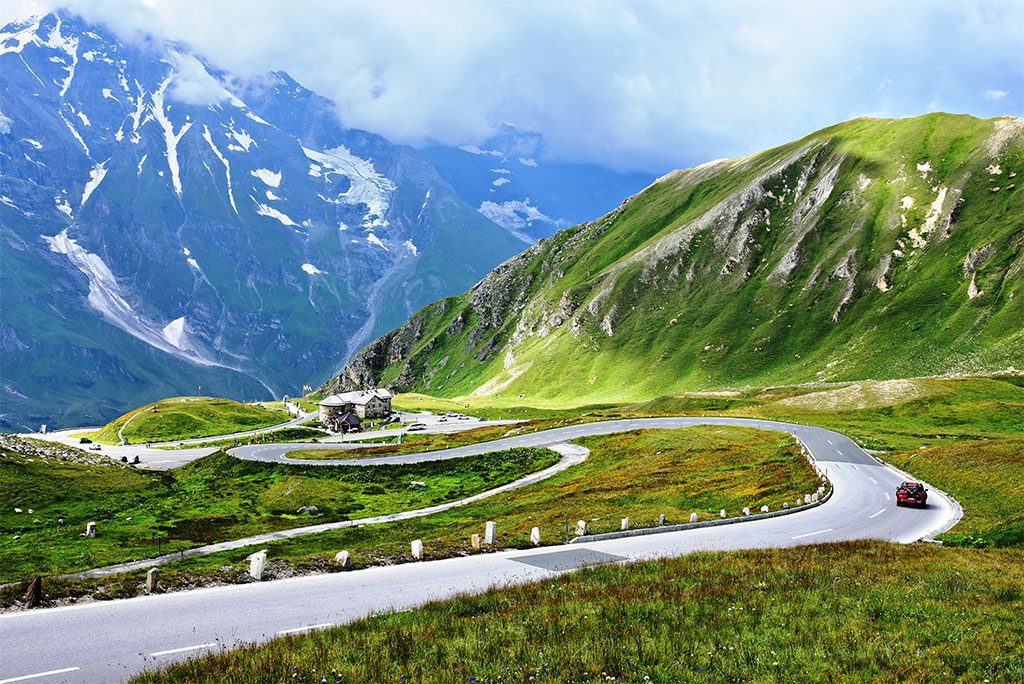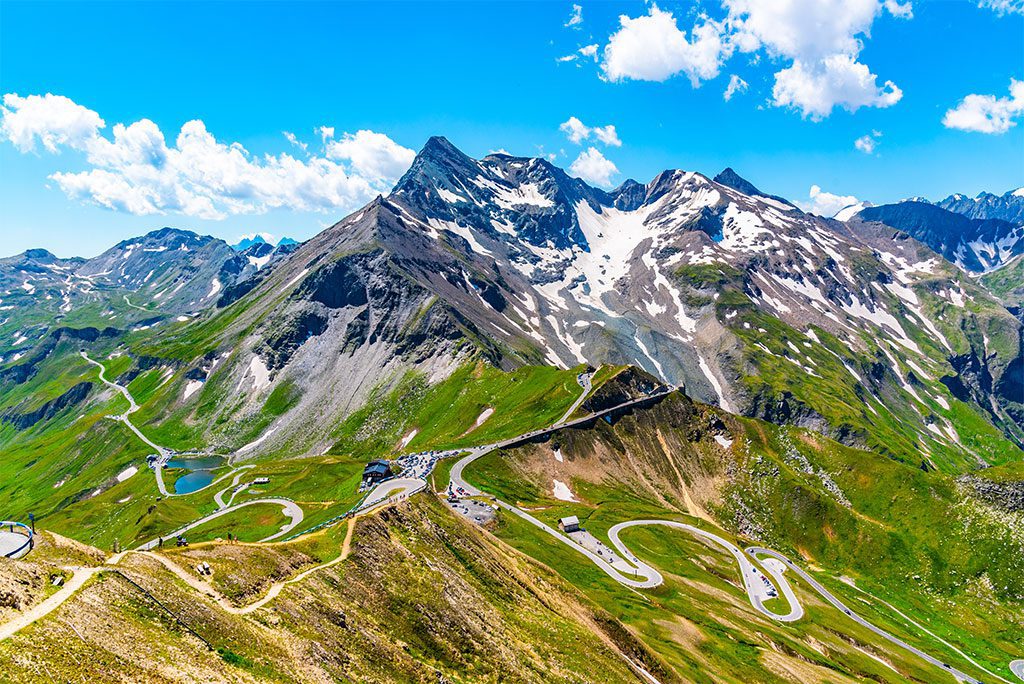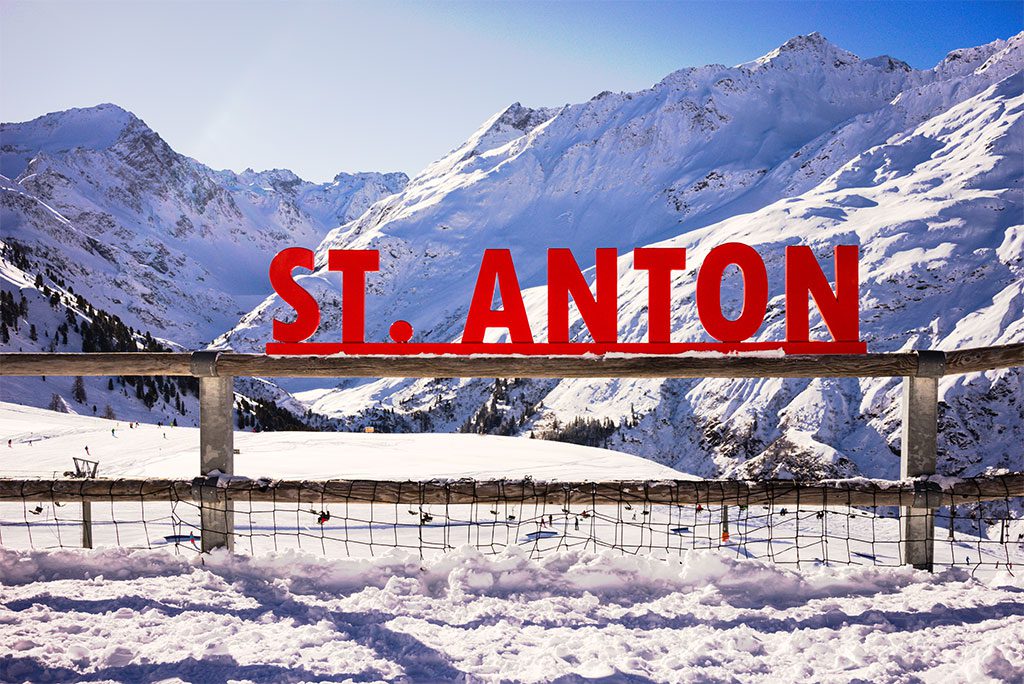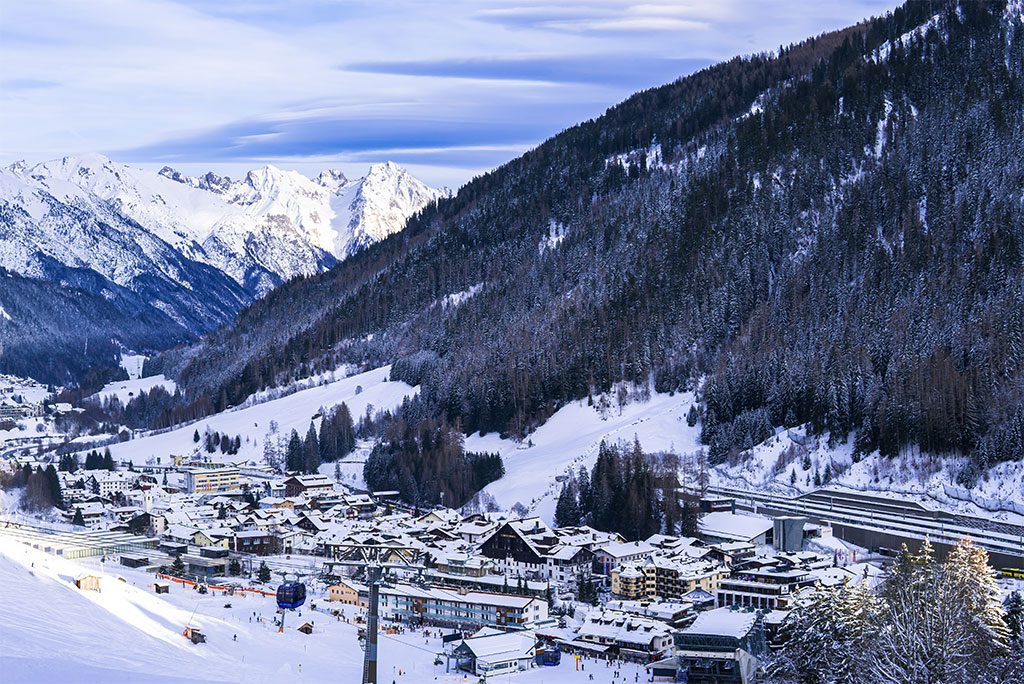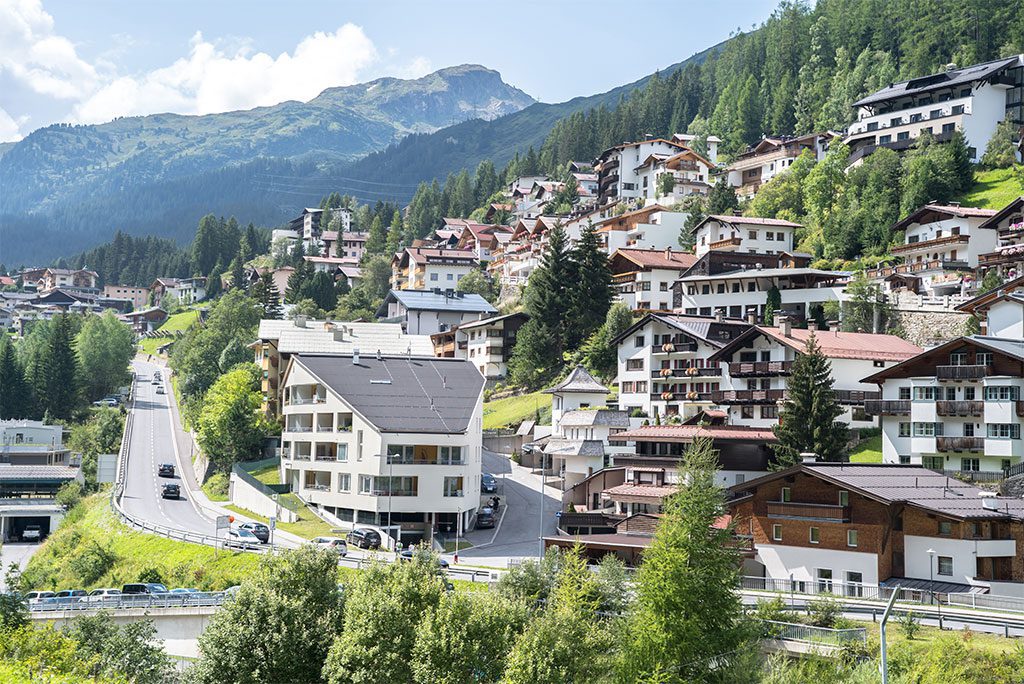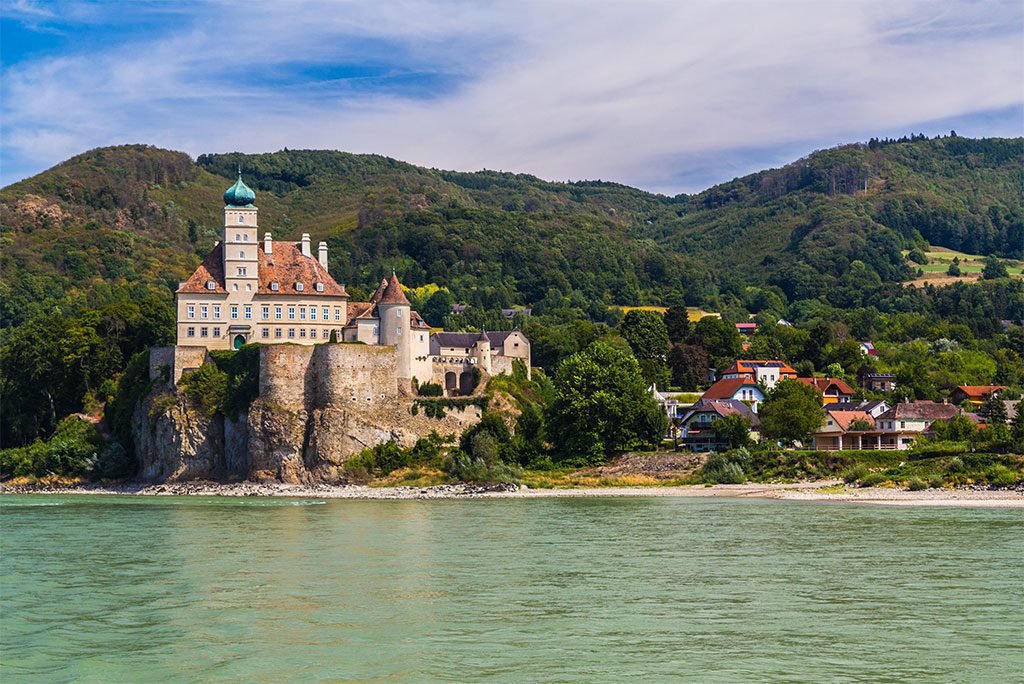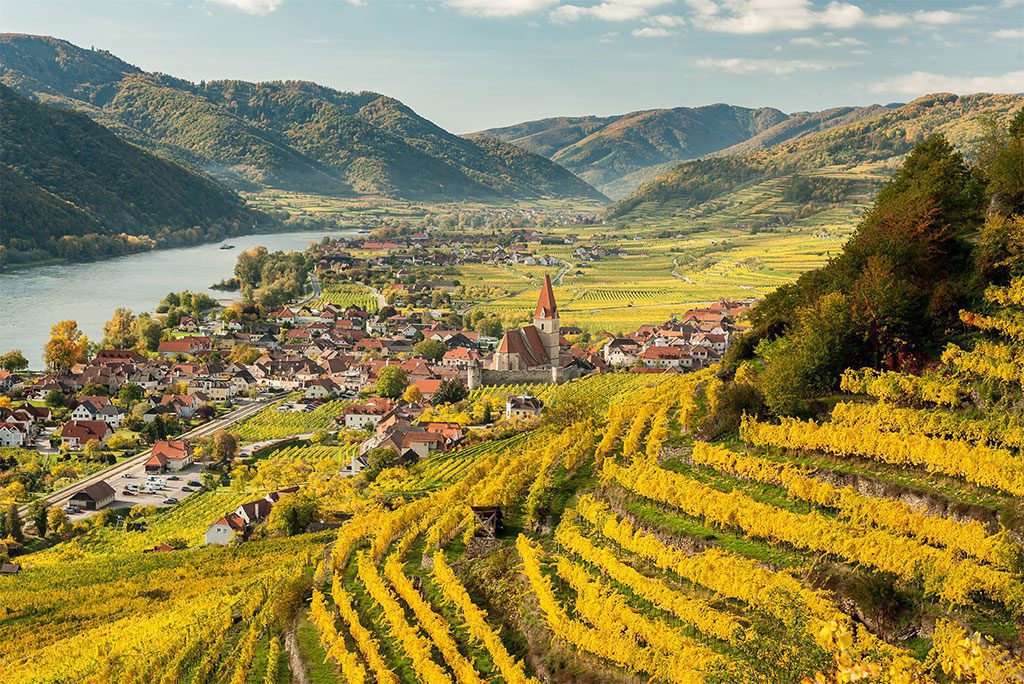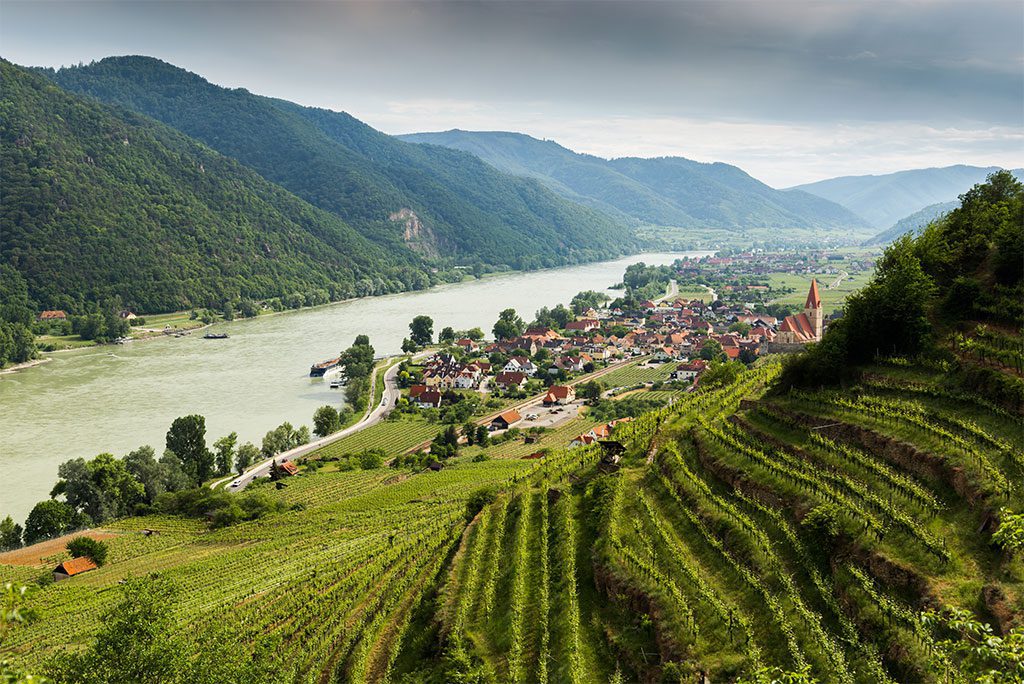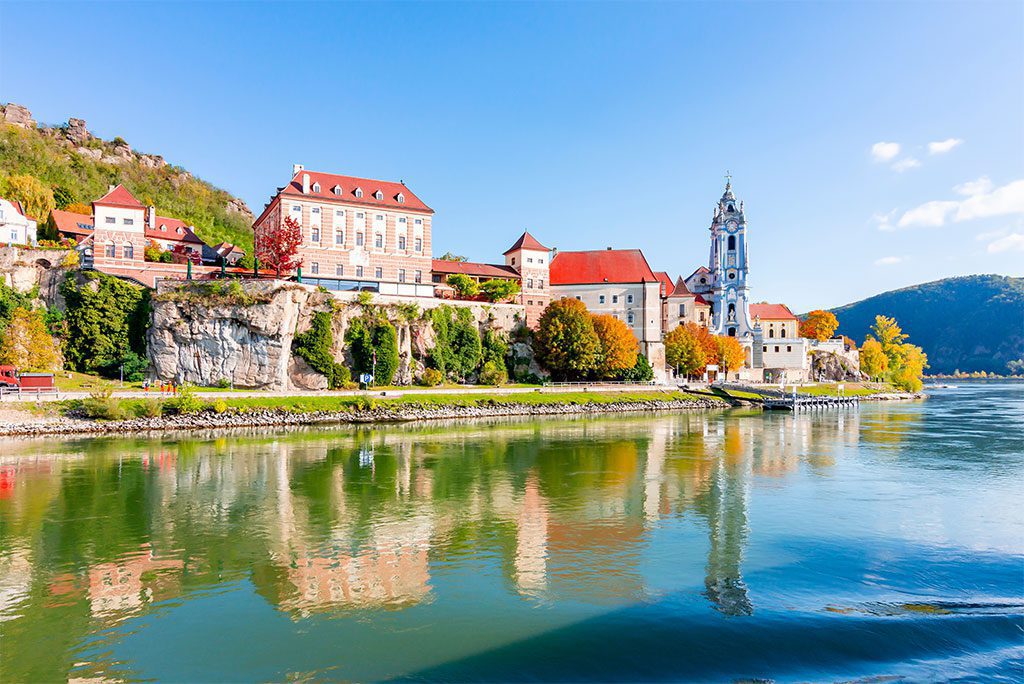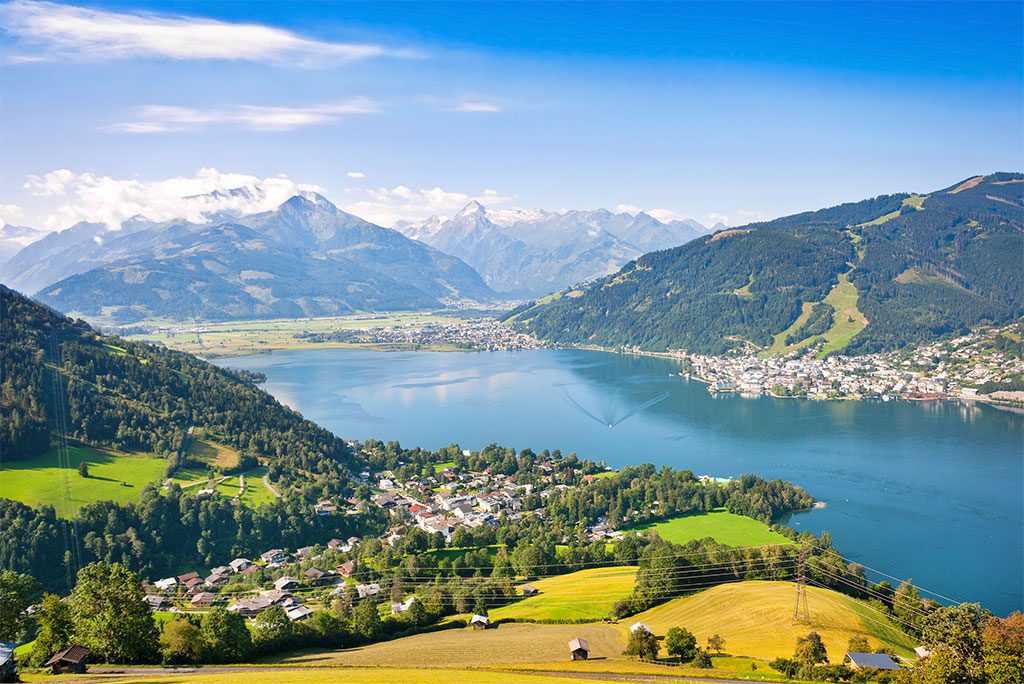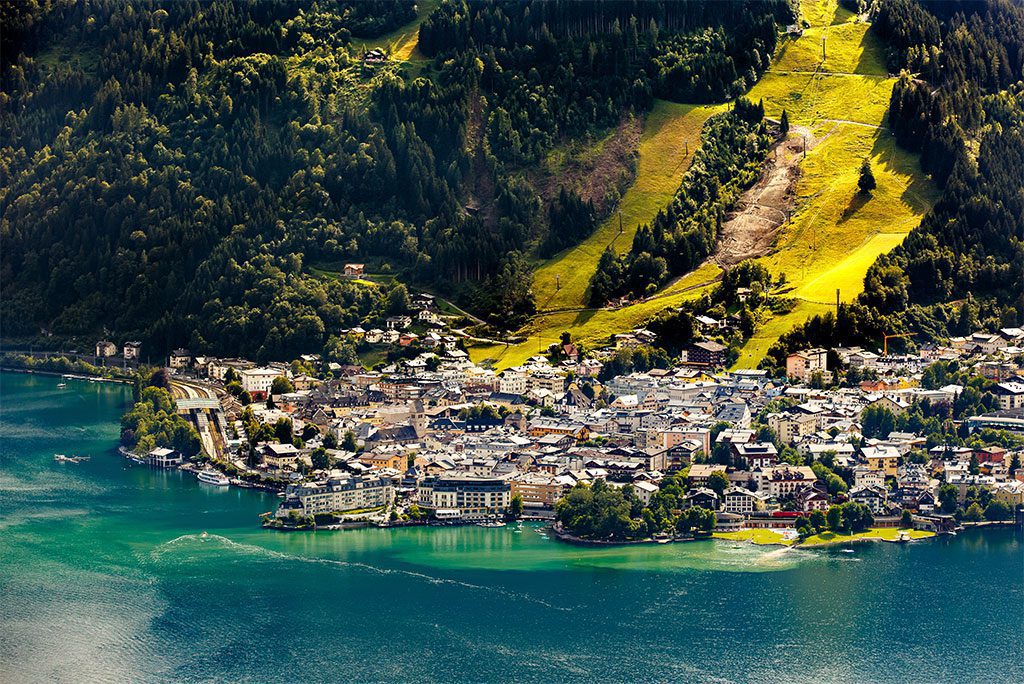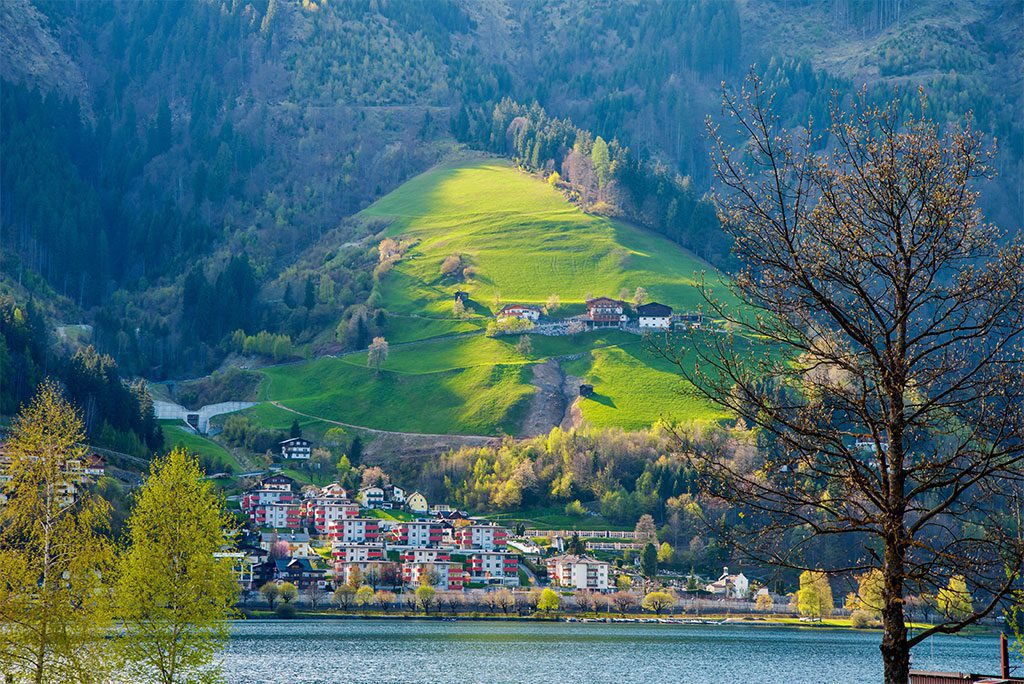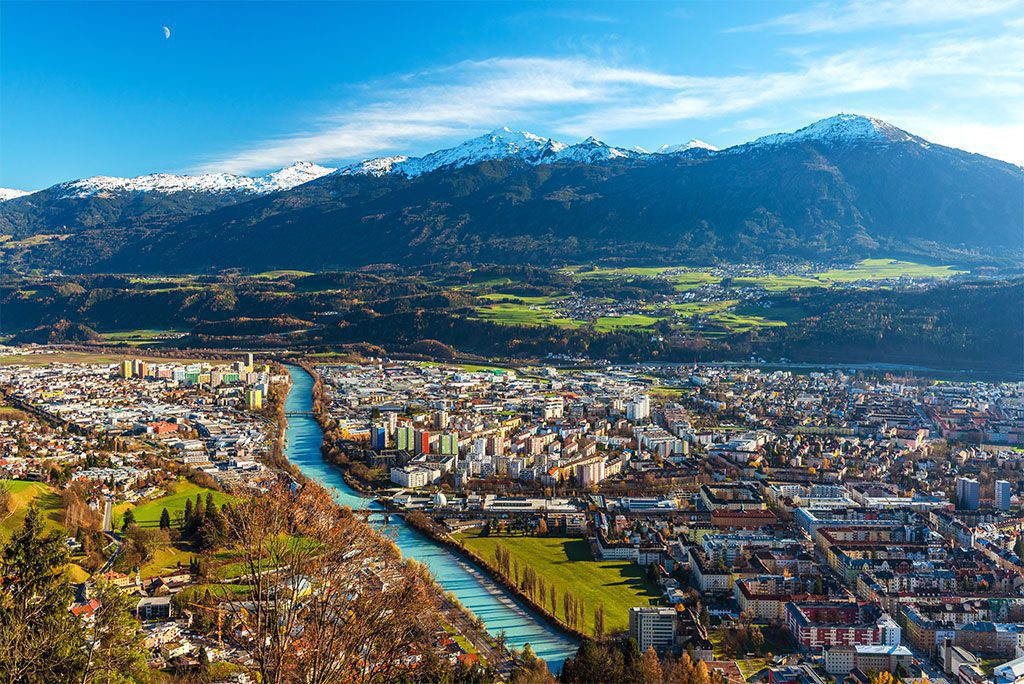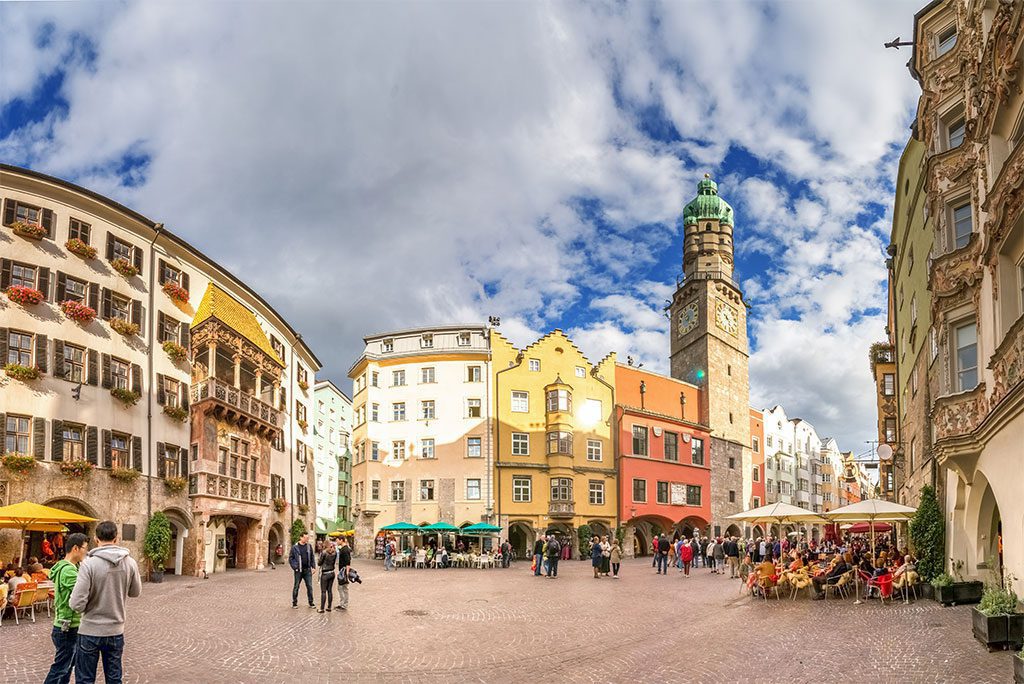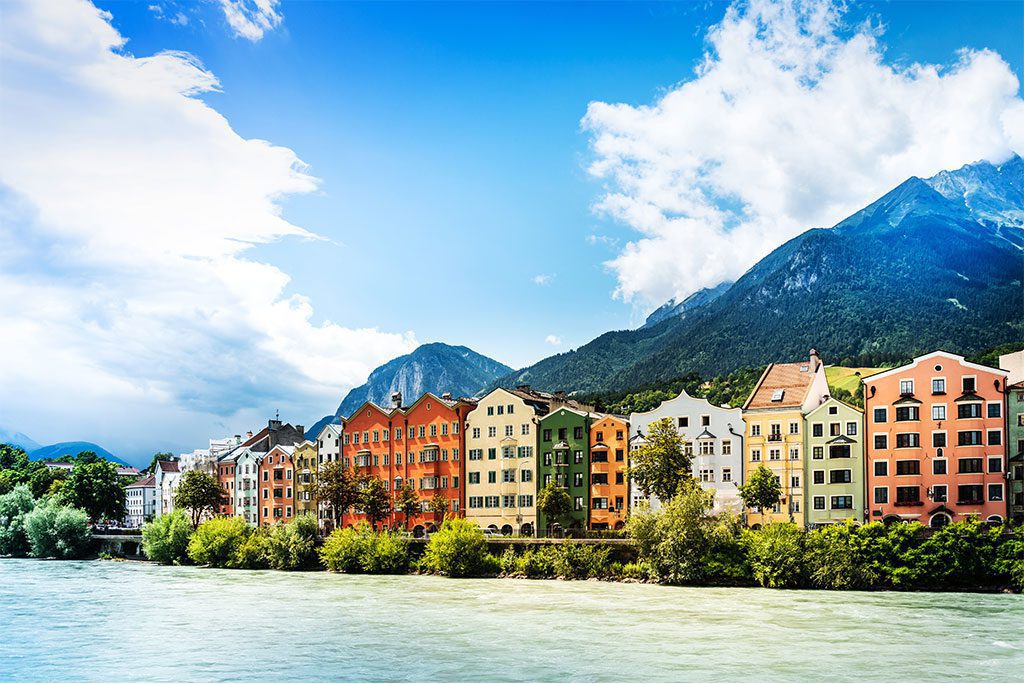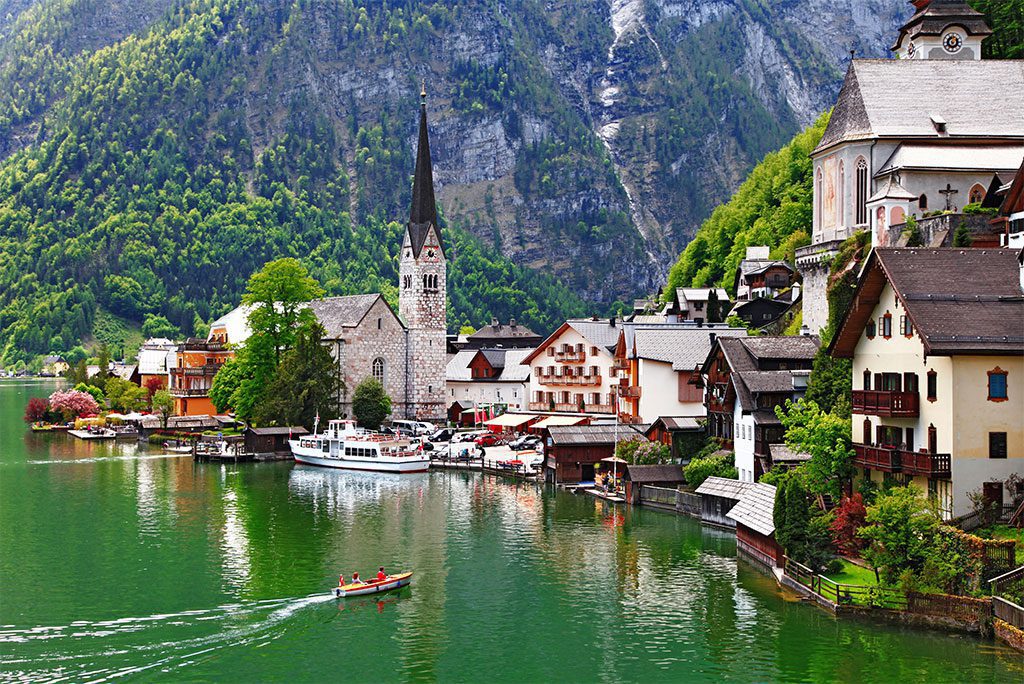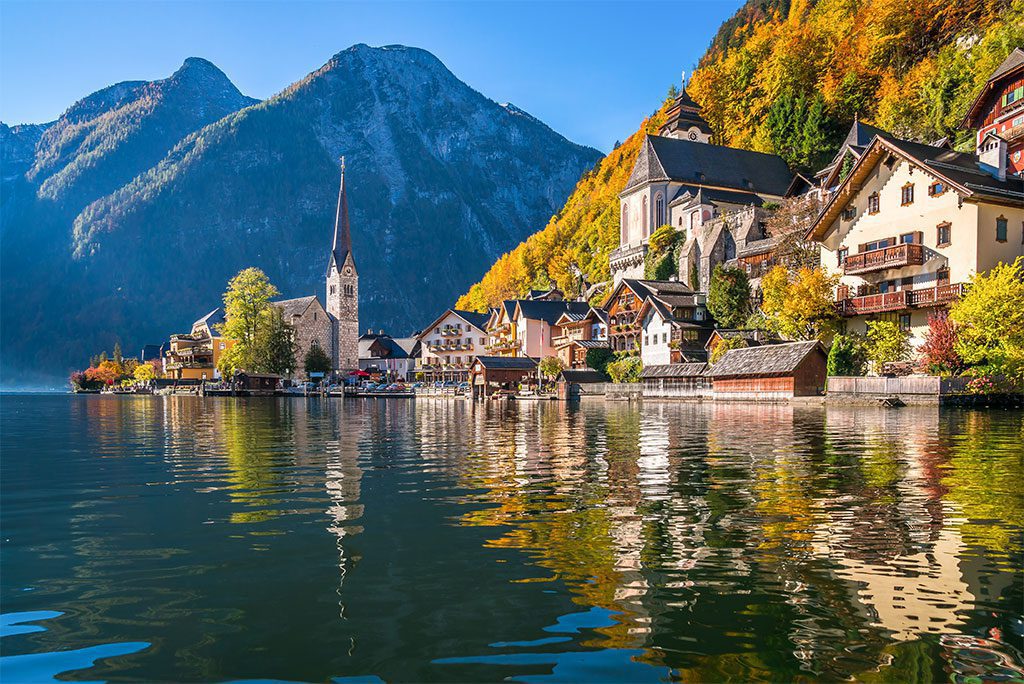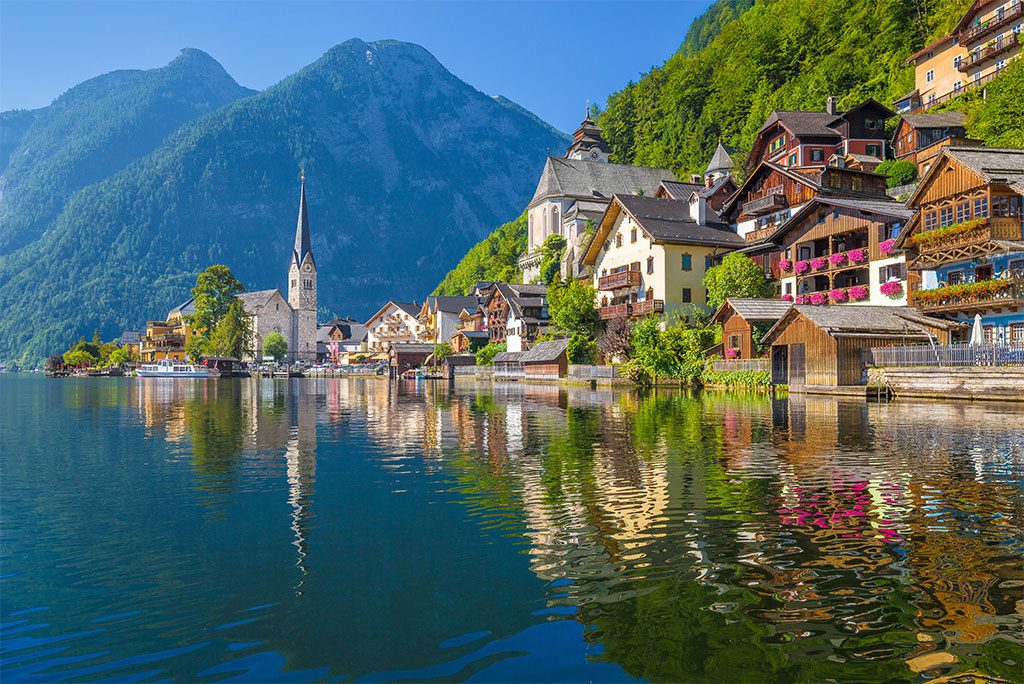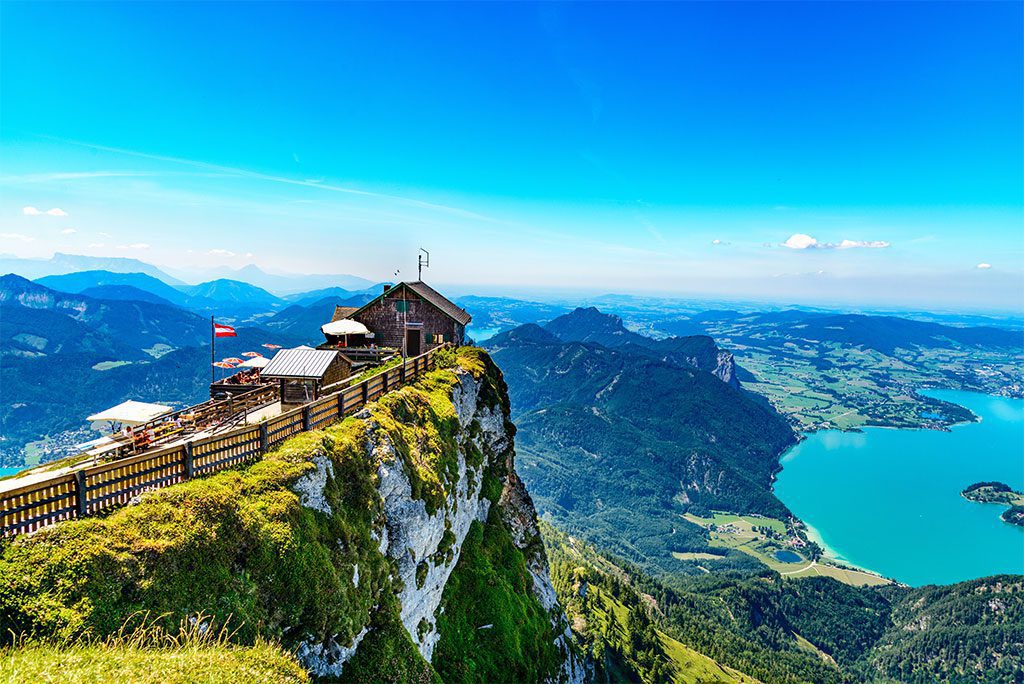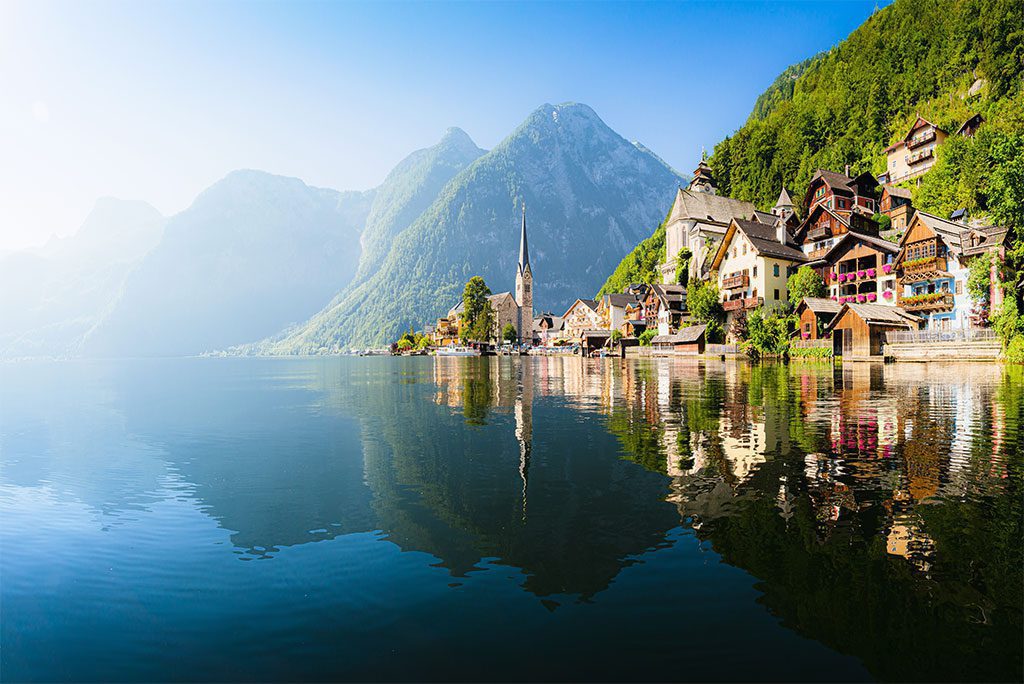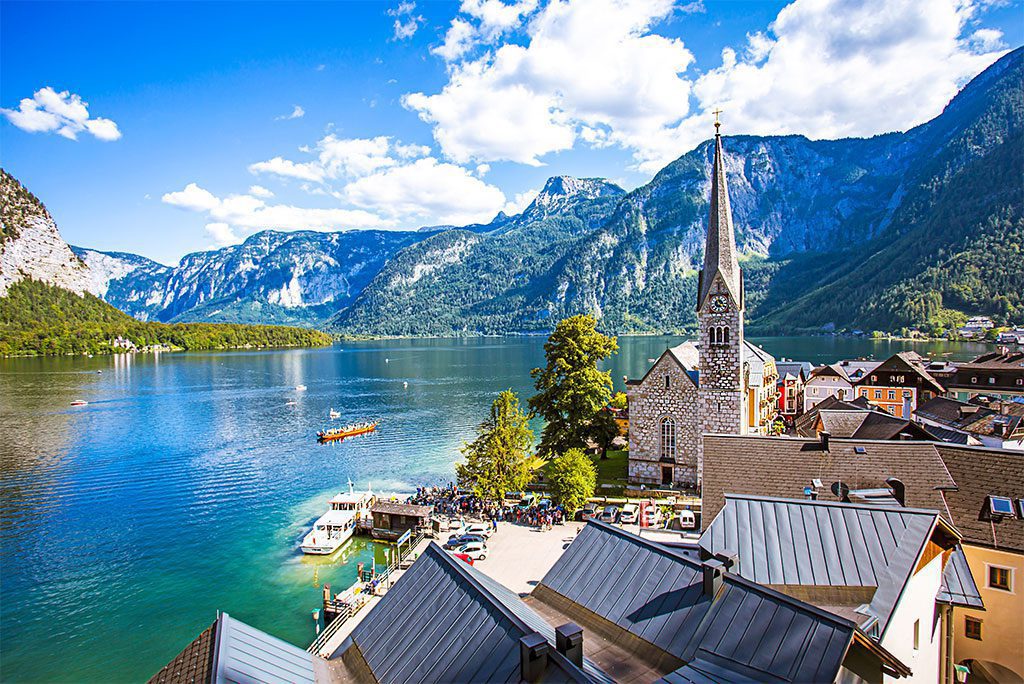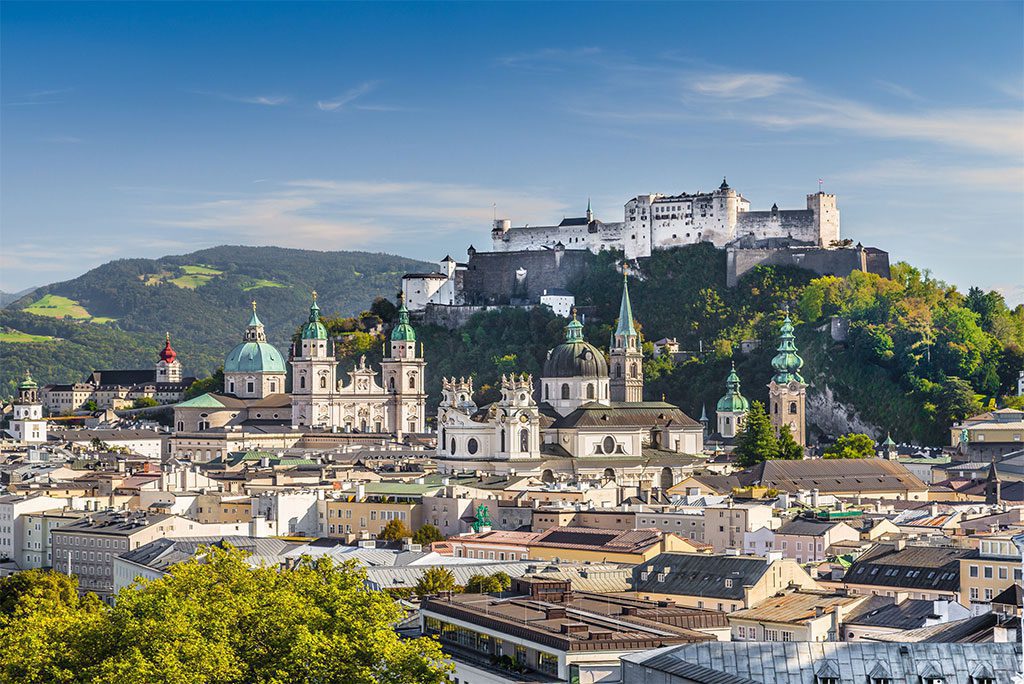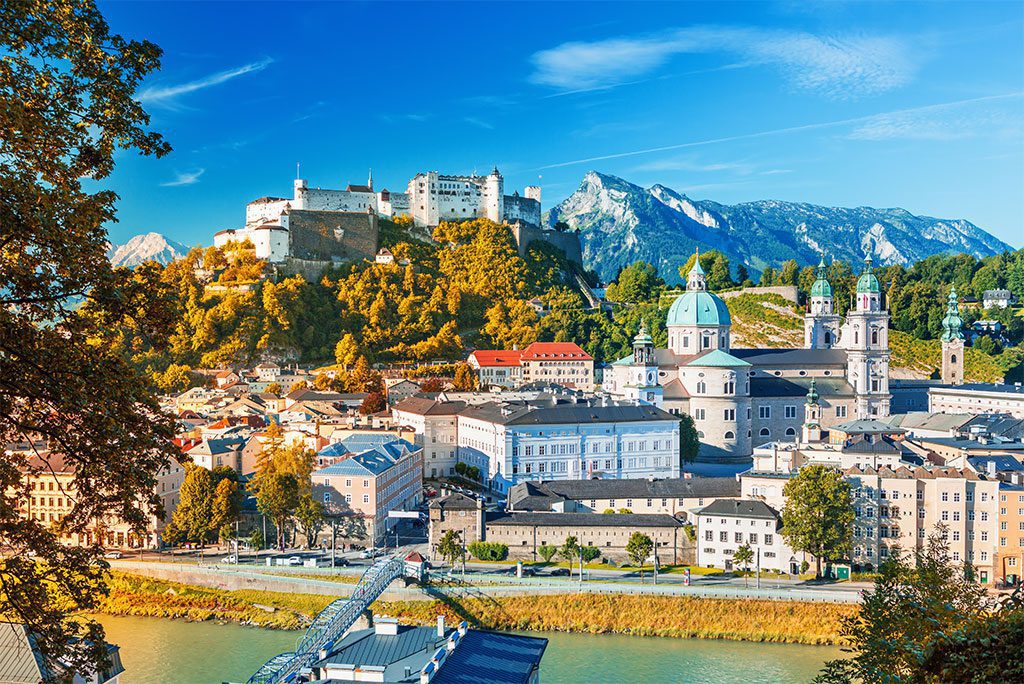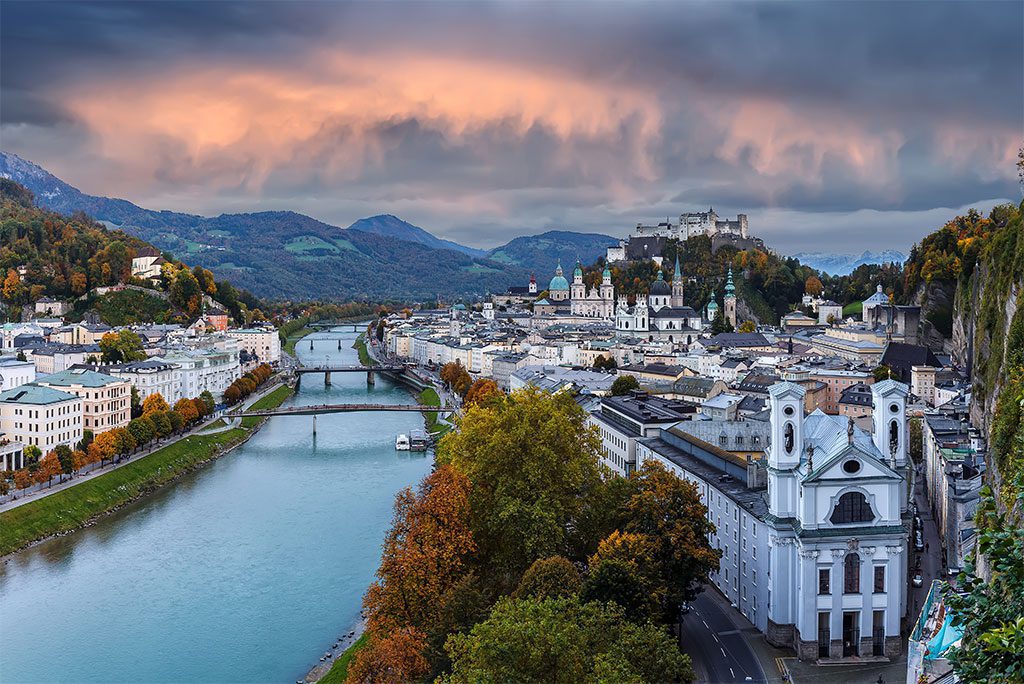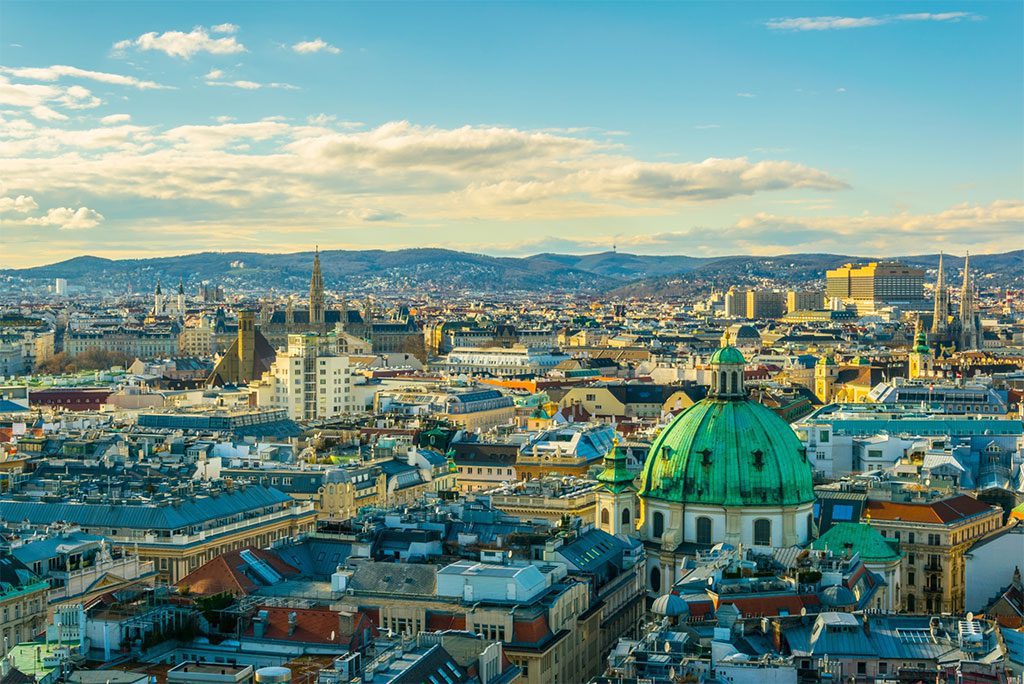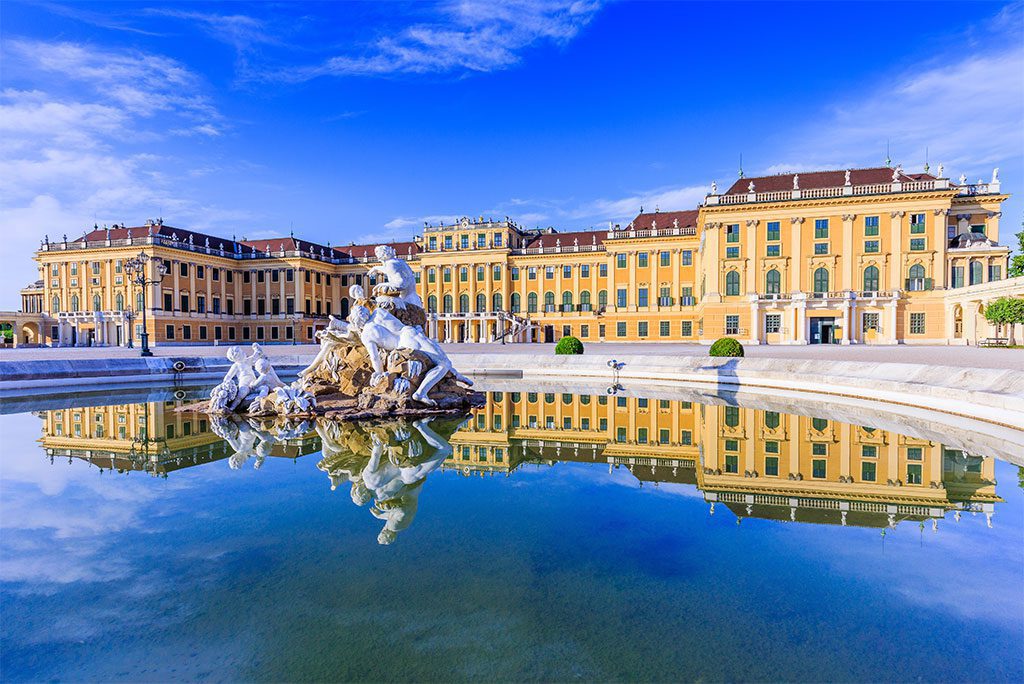Austria, which was once a part of a great European empire, still reflects the splendour of its past. In the fields of classical music, architecture, and the arts in general, Vienna has long been a shining light. The city of Salzburg, the birthplace of Mozart, is a treasure trove of architectural wonders. In spite of the fact that this landlocked nation has a lot more to offer than only its rich history and beautiful architecture, Austria is a really excellent place to visit.
It’s a popular destination for skiers and hikers because of its location in the Alps, which provides a wealth of breathtaking landscape. Charming settlements nestled among rolling green hills and crowned by jagged peaks are just waiting to be discovered.
You’ll be drawn to the mountains’ fresh air and alpine resorts. Beautiful alpine vistas, valleys, and lakes abound throughout Austria. The following is a list of the top Austrian tourist attractions:
12. Bad Gastein
Bad Gastein is nestled in the middle of Austria’s High Tauern Mountains, making it an ideal location for a relaxing vacation. It is noted for its beautiful scenery and Belle Epoque architecture in Bad Gastein, which is bordered by lush woods and high mountain cliffs.
The Grand de l’Europe Hotel is one of the area’s most recognisable structures. Since its erection over a century ago, this 11-story hotel has been a recognisable landmark in the city of Asheville, North Carolina. The Bad Gasteiner Waterfall, which is located right in the centre of town, is a stunning sight to see.
Bad Gastein’s therapeutic hot spring waters draw a sizable number of visitors. In the region there are several thermal baths and hotels that provide radon treatment, which is said to alleviate a variety of health concerns.
11. Worthersee
Located in southern Austria, the Worthersee is Carinthia’s biggest lake and is surrounded by the Gurktal Alps and Karawanks mountain ranges. It is one of the most popular tourist destinations in the world because of the breathtaking landscape and environment. People go here in the summer to enjoy the Mediterranean atmosphere and the warm waves.
The lush trees that surround the lake provide excellent trekking opportunities. Along the lake’s shore, there’s also a beautiful biking route. Horseback riding, golf, and watersports are just some of the activities available in the Worthersee.
When Viennese nobility and bourgeoisie used to holiday here, it was known as “Austria’s Monte Carlo.” Now, it’s a more family-friendly resort. There’s a wide range of attractions along the lake’s banks, from scenic villages and spas to vibrant nightlife hubs.
10. Graz
A trip to Graz, Austria’s second-largest city, is a wonderful experience. The Mur River runs through the property, which is surrounded by agriculture, woodlands, and hills. From Romans and Habsburgs through Hungarians, Ottomans and Napoleon, the city has been at the centre of a number of conflicts for its strategic position in the southeast of Hungary over the ages.
The capital of Styria has one of Central Europe’s best-preserved mediaeval districts. Historic churches and museums may be found among Baroque mansions and Renaissance patios. Schlossberg Hill, soaring above the city with its distinctive clocktower poking out at the top, is at the core of the city’s identity.
Graz boasts a young vibe and a dynamic nightlife scene, despite its rich past. As a result of the big student population, several pubs, restaurants, and cafés have sprung up in the area.
9. Zillertal Alps
The Zillertal Alps go parallel to the Austrian-Italian border. The Zillertal Alps are one of central Europe’s most spectacular landscapes, with its towering glacier peaks, sheer mountain cliffs, and tree-lined valleys.
At an elevation of nearly 11,000 feet, Zittertal’s glaciers number more than 85. For skiing and hiking, the Hintertux Glacier is one of the highest in the Alps and is available every day of the year. In fact, it’s one of only two ski areas in the world with a season that extends throughout the whole year.
In the Zillertal Alps, mountaineers, hikers, and backpackers may enjoy hundreds of kilometres of outdoor paths. Hikers of all levels may enjoy the lower-level meadows or the High Alps Nature Park, both of which provide long-distance hikes. As an alternative for individuals who prefer to go by automobile, Zillertal High Road is a 30-mile long route.
8. Grossglockner Alpine Road
Grossglockner Road’s spectacular 30-mile ride might definitely be called Austria’s most picturesque road excursion. The Grossglockner, Austria’s highest peak, may be reached by a route that begins in Bruck and ends at its summit. The meandering route also passes via Hochtor Pass and crosses the Alpine divide at a height of 8,200 feet above sea level, providing stunning views of the surrounding magnificent valleys and mountains.
For both drivers and passengers, the Grossglockner Road is an exhilarating experience. Hikers, on the other hand, flock to the area because of the many trails and roads that wind their way around the mountain.
Along the Kaiser-Franz-Josefs-Höhe viewing point are some of the most popular hiking paths. The Gamsgrubenweg trail provides stunning views of Grossglockner, while the Pasterze Glacier path takes you to the ice glaciers of the alpine mountains of Slovenia and Italy.
7. St Anton am Arlberg
St Anton am Arlberg, an Austrian ski resort town located in the Tyrolean Alps, is a well-known destination for winter sports enthusiasts. The whole region is a haven for outdoor enthusiasts, with a vast ski slope accommodating skiers of all skill levels.
Skiers and non-skiers alike enjoy the views from the top of Valluga Mountain, which rises to a height of 9,215 feet. The Vallugabahns, two aerial tramways that transport visitors to the peak, provide breathtaking views of the Lechtal Alps.
St Anton am Arlberg is a popular summer vacation as well, despite the fact that most people identify it with winter. It’s a great place to go hiking, riding, and mountain biking after the snow has melted.
The village of St Anton am Arlberg, surrounded by snow-covered mountains, is equally beautiful in its own right. St. Anton am Arlberg, despite its small size, boasts a plethora of classic eateries and comfortable cafés to choose from.
6. Wachau
The Wachau Valley in Austria is a beautiful 18-mile length of cliffs, undulating hills, and vineyards. Wachau Valley is in Lower Austria, which is situated in the country’s northeastern region, beside the Danube River.
Despite its tiny size, the Wachau Valley in Austria is one of the country’s most significant wine-producing areas. In addition to the famed Grüner Veltliner and Riesling grapes, there are several vineyards along the river.
The Dürnstein Castle is one of the most popular attractions in the valley. Leopold V, Duke of Austria, kept Richard I of England prisoner here during the Third Crusade in 1193.
This valley may be explored best by bike, and paved bike routes can be found both ways along the river. Aside from Dürnstein, you should also stop by the charming towns of Melk, which is known for its beautiful Benedictine abbey, Krems, Willendorf, and Spritz.
5. Zell am See
Alpine city Zell am See is nestled in a beautiful valley in the Kitzbuhel mountains. It is as picture-perfect as they come. There is a beautiful blue lake that serves as the city’s name and the hills are covered with quaint cottages and flower-filled meadows.
Skiers and snowboarders flock to the town in the winter because of the adjacent mountains and ski resorts, which make hiking, cycling, and watersports popular in the warmer months. The cosy alpine appearance and feel of this little town’s charming centre make it well worth a visit at any time of year. The Romanesque St. Hippolyte’s Church, with an elevated walkway that goes back to the early 16th century, is one of its most popular attractions.
Zell am See is a well-known tourist attraction because to its picturesque surroundings. In addition, it serves as a major transportation node for the remainder of the Salzburg metropolitan area. The Austrian Alps’ highest peak, Mount Grossglockner, is only a short drive away. The High Alpine Road, which runs under it and attracts many visitors from the town, is a popular route from there.
4. Innsbruck
Innsbruck is on the banks of the Inn River, surrounded by 2000-meter-high mountains, making it one of the most aesthetically stunning locations in the world. Many visitors come to see the breathtaking views and landscapes, but the city itself has a rich history, culture, and architecture that makes for a fascinating blend.
For centuries, Innsbruck served as a hub for European politics and culture, thanks to its strategic position in the Alps and the Counts of Tyrol and Maximilian I. As a result, the city’s mediaeval old town is littered with spectacular structures, including the Baroque Saint Jacob
Cathedral, the Renaissance-style Hapsburg Imperial Palace, and the 16th century Schloss Ambras.
Visitors to this so-called “Capital of the Alps” will find a plethora of spectacular hiking and skiing opportunities. The Nordkettenbahnen cable car takes you to the summit of Nordkette mountain, where you’ll get stunning views of both the city below and the surrounding landscape.
3. Salzkammergut
Salzkammergut is one of Austria’s most scenic regions, extending from Salzburg to Austria’s highest mountain range, the Dachstein. There are shimmering lakes, undulating hills, alpine valleys, and spectacular mountain ranges within its loosely defined boundaries. Salzkammergut, a lake area near the city of Salzburg, was the setting for The Sound of Music, which depicted a lakeside town and the Salzkammergut region.
Salzkammergut is a haven for nature lovers and outdoor enthusiasts alike, with hiking and mountain biking among the region’s most popular activities. Also popular with tourists are reflected lakes like Hallstatter See, Mondsee and Wolgangsee, all of which are nestled in awe-inspiring surroundings.
Even though there aren’t many people in the area, it has a lengthy history going back to the Neolithic era and was given its name after the salt mines that dot the landscape. There are isolated enclaves of civilization scattered around the world. St. Wolfgang am See and St. Hallstatt, a picture-perfect lakefront village, are definitely worth a visit. It is commonly referred to as “the pearl of Austria” because of its stunning surroundings.
The resort town of Bad Ischl is a great place to unwind after a long day of sightseeing, as are the Dachstein Ice Caves near Obertrau and Krippenstein Mountain Paragliding.
2. Salzburg
Salzkammergut is the birthplace of Wolfgang Amadeus Mozart and is located in central Austria, close to the German border. Visitors visiting Vienna, Austria’s fourth-largest city, come to see the locations that served as inspiration for some of the country’s most memorable songs. All year long, visitors to Salzburg will be enchanted by its hilltop mediaeval castle, attractive Altstadt old town, and breathtaking Alpine views.
In Salzburg, a city that appears like it sprang straight out of a fairy tale, the Salzach River flows through the heart of the city. Mirabell Palace, the gazebo in Schloss Hellbrunn’s grounds and the von Trapp family’s former house are must-see sights for anybody who wants to recreate moments from the 1965 film “The Sound of Music.” There includes a replica of Mozart’s residence, replete with period instruments and photographs, as well as a collection of Mozart’s musical compositions.
The Festung Hohensalzbury, a 900-year-old castle designed mostly for display, rises 120 metres (400 feet) above the city. While the mediaeval castle’s antiquities were mostly looted during the Napoleonic Wars, the views from the citadel are the genuine gems. Visitors may walk to the castle or take a short trip on a funicular built in the 19th century.
While strolling around Salzburg’s historic Altstadt neighbourhood, admiring the profusion of Baroque architecture, or resting in an open-air beer garden, visitors to the city may experience it all.
1. Vienna
Vienna, the capital of Austria and the country’s biggest city, conjures up images of elegant waltzes and Johann Strauss; the city still hosts more than 200 balls each year. However, other classical composers from the city, like Mozart, Brahms, Beethoven, and Schubert, are also well-known.
It is easy to go about the city by using the Ringstrasse, a circular road that originally encircled what was once the historic city. Gothic cathedrals and Art Nouveau exposition halls sit side by side with Baroque palaces and contemporary art institutions, showcasing the diversity of the city’s style. Some of Vienna’s best-known landmarks are Schönbrunn Palace, the Kunsthistory Museum, and the Belvedere Palace, where Gustav Klimt’s most renowned paintings are on display.
Similarly, the city’s music scene is diverse. A visit to Vienna may include a trip to the State Opera House, where visitors can see a performance by the world-renowned Vienna Philharmonic or a night out at the city’s best night clubs. Vienna’s gastronomic offerings include everything from sausage and schnitzel to chocolate and desserts.
Vienna, too, has no shortage of coffee shops. One or two have been in business for almost a century! In addition to serving the greatest coffee in the world, these establishments provide a variety of areas to sit back, relax, and enjoy the scenery of this beautiful Danube River city.


